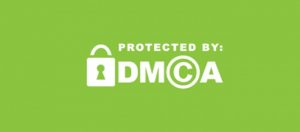 The European Parliament adopted a resolution earlier this month to suspend the EU-U.S. Privacy Shield agreement. The Privacy Shield is a protocol that provides for the exchange of personal data between the EU and the United States for commercial purposes. Adopted in 2016 after the European Court of Justice invalidated the Safe Harbor arrangement, the shield is intended to safeguard the “fundamental privacy rights” of European citizens with respect to data transfers between signatory countries.
The European Parliament adopted a resolution earlier this month to suspend the EU-U.S. Privacy Shield agreement. The Privacy Shield is a protocol that provides for the exchange of personal data between the EU and the United States for commercial purposes. Adopted in 2016 after the European Court of Justice invalidated the Safe Harbor arrangement, the shield is intended to safeguard the “fundamental privacy rights” of European citizens with respect to data transfers between signatory countries.
Articles Tagged with safe harbor
DMCA Safe Harbor: Re-Register Your Designated Agent with the U.S. Copyright Office!
The U.S. Copyright Office issued a final rule effective December 1, 2016, addressing one of the requirements for social media operators and other companies that allow users to post content online to qualify for the DMCA safe harbor. In “DMCA Safe Harbor: Registration Time,” colleagues Michael Heuga and Cydney Tune discuss what companies with a DMCA designated agent need to do to satisfy the new registration requirement under the updated rule.
When It Comes to the DMCA, a Red Flag Becomes Harder to Fly
 It is unlikely that when Stephanie Lenz posted a home video of her children dancing to Prince’s “Let’s Go Crazy” on YouTube, she could have anticipated that, nearly a decade later, she would be seeking U.S. Supreme Court review in connection with that video. In Lenz v. Universal Music Corp., Ms. Lenz sued Universal Music Corporation for taking her video down from YouTube pursuant to a takedown notice sent to YouTube. That was in 2007. Universal claimed that the video violated their copyright in the “Let’s Go Crazy” song. As we previously discussed, the takedown notice is a provision in the Digital Millennium Copyright Act (DMCA) that allows copyright holders to require a service provider, like YouTube, to “expeditiously” remove copyright-infringing content in order to avoid any liability for the infringement. Critics of this provision complain that it is often abused by corporate copyright holders to unjustifiably take down content that might otherwise constitute fair use. Ms. Lenz sent a counter notification to YouTube claiming fair use, and the video was subsequently reposted weeks later. Nonetheless, Ms. Lenz sued Universal for misrepresentation based on a little used provision of the DMCA and sought a declaration that her use was non-infringing. That provision, or Section 512(c)(3)(A)(v), requires that for the takedown notice to be effective, the copyright holder must have a “good faith” belief that use of the content is not authorized by the copyright holder, its agent or the law.
It is unlikely that when Stephanie Lenz posted a home video of her children dancing to Prince’s “Let’s Go Crazy” on YouTube, she could have anticipated that, nearly a decade later, she would be seeking U.S. Supreme Court review in connection with that video. In Lenz v. Universal Music Corp., Ms. Lenz sued Universal Music Corporation for taking her video down from YouTube pursuant to a takedown notice sent to YouTube. That was in 2007. Universal claimed that the video violated their copyright in the “Let’s Go Crazy” song. As we previously discussed, the takedown notice is a provision in the Digital Millennium Copyright Act (DMCA) that allows copyright holders to require a service provider, like YouTube, to “expeditiously” remove copyright-infringing content in order to avoid any liability for the infringement. Critics of this provision complain that it is often abused by corporate copyright holders to unjustifiably take down content that might otherwise constitute fair use. Ms. Lenz sent a counter notification to YouTube claiming fair use, and the video was subsequently reposted weeks later. Nonetheless, Ms. Lenz sued Universal for misrepresentation based on a little used provision of the DMCA and sought a declaration that her use was non-infringing. That provision, or Section 512(c)(3)(A)(v), requires that for the takedown notice to be effective, the copyright holder must have a “good faith” belief that use of the content is not authorized by the copyright holder, its agent or the law.
The Complicated Relationship between DMCA Takedown Notices and the Word “Expeditious”
Hours. Days. Weeks. Months. When it comes to acting on copyright infringement takedown notices, just how fast is fast enough for social media platforms? Some recent (and not-so-recent) cases reveal how difficult the question has proven for the courts.
Will There Be a “Safe Harbor 2.0”?
In their recent Client Alert, colleague Catherine D. Meyer examines the prospects of a potential “Safe Harbor 2.0” being hammered out between the EU and United States regarding data transfer schemes.
Additional Source: With Safe Harbor now “Invalid,” Companies Must Change Data Practices
 Internet & Social Media Law Blog
Internet & Social Media Law Blog


